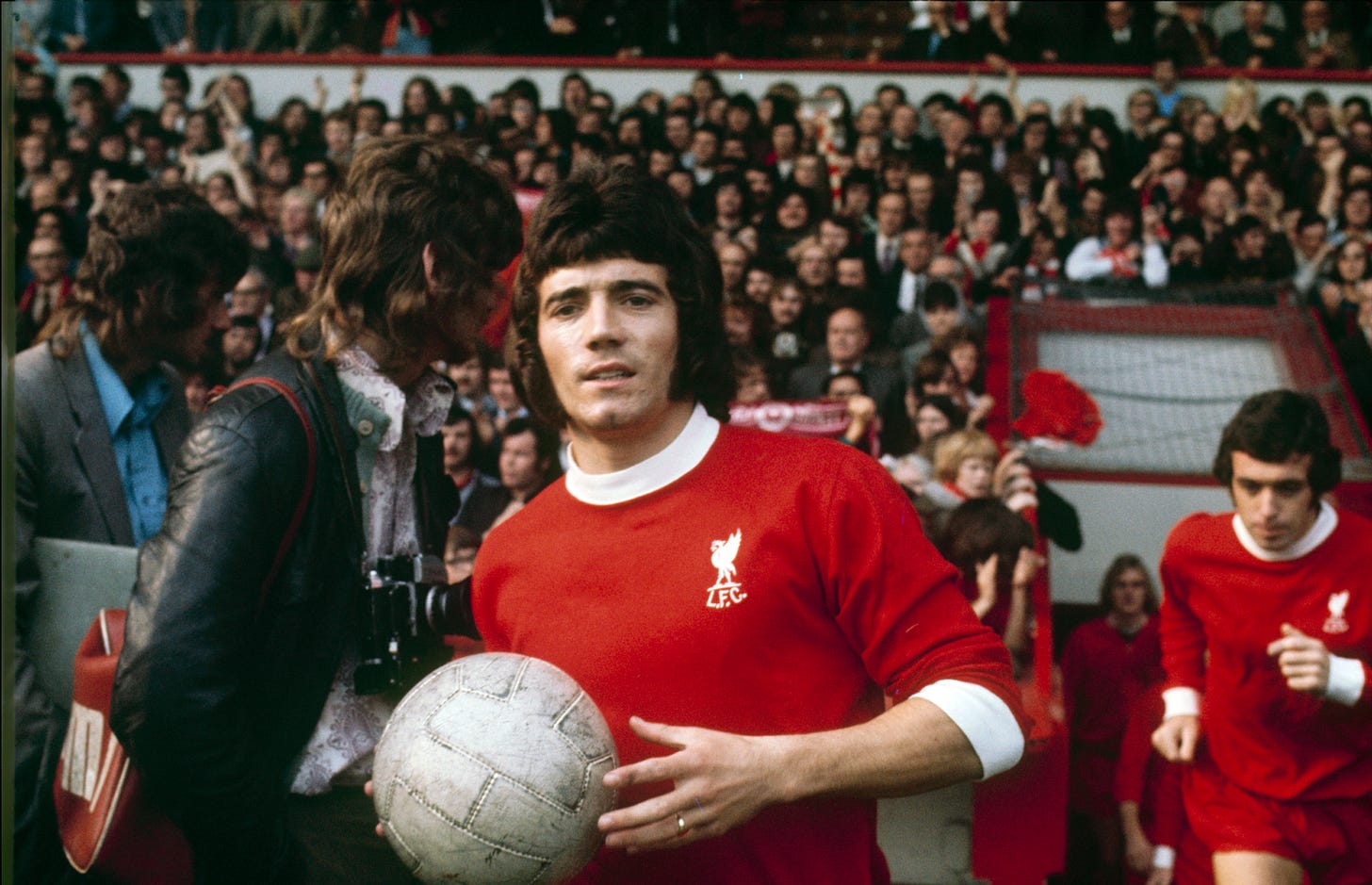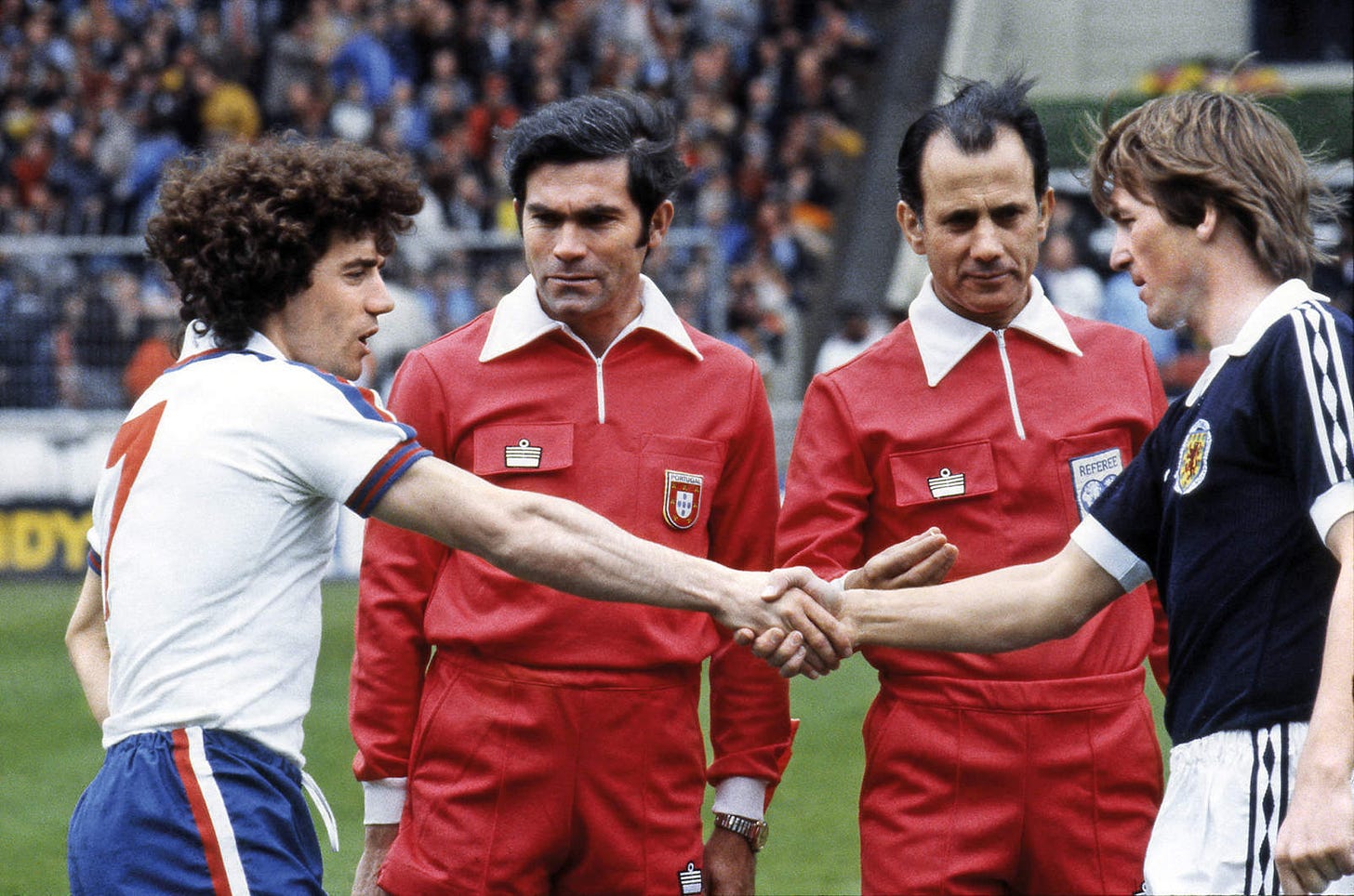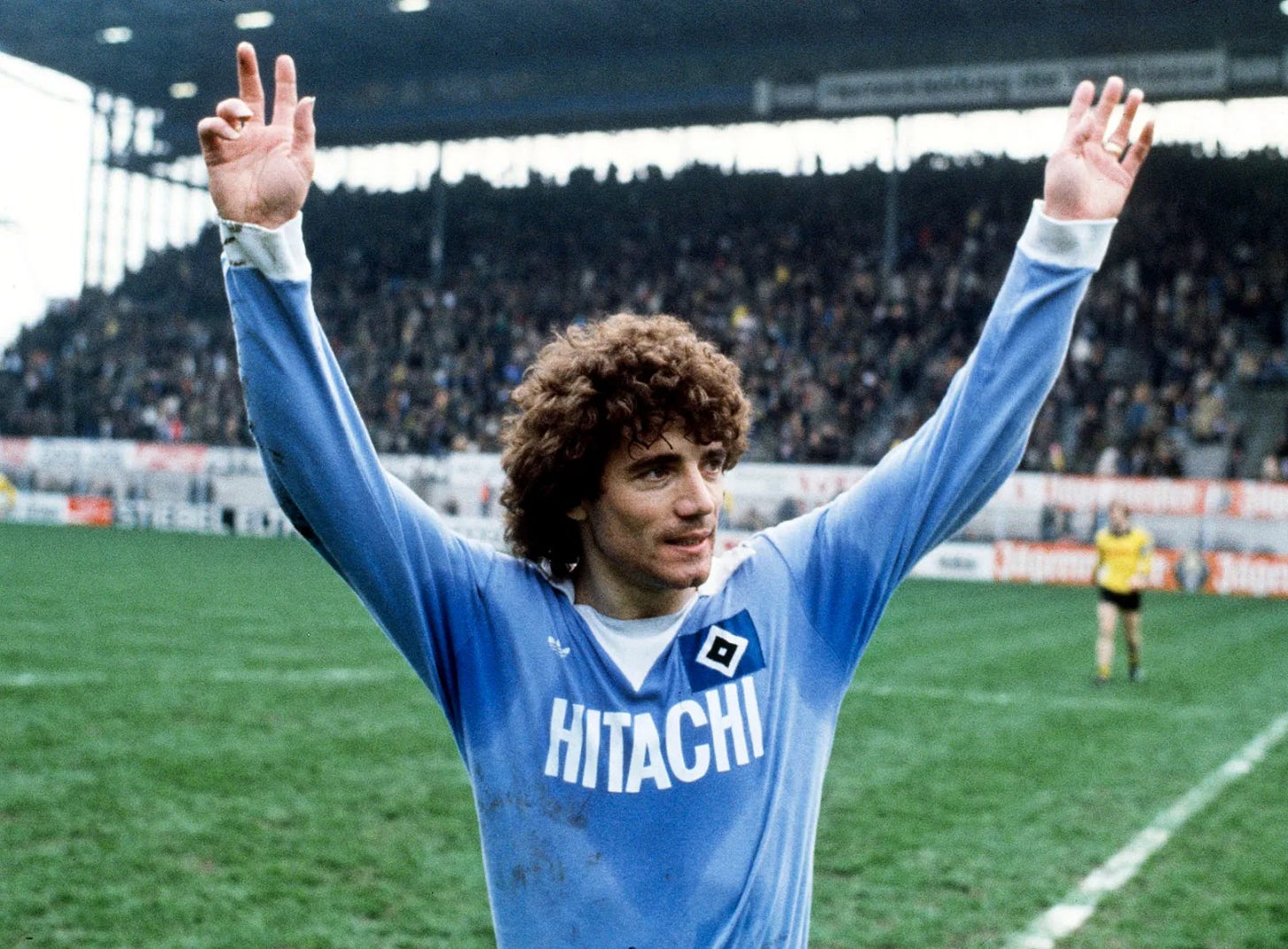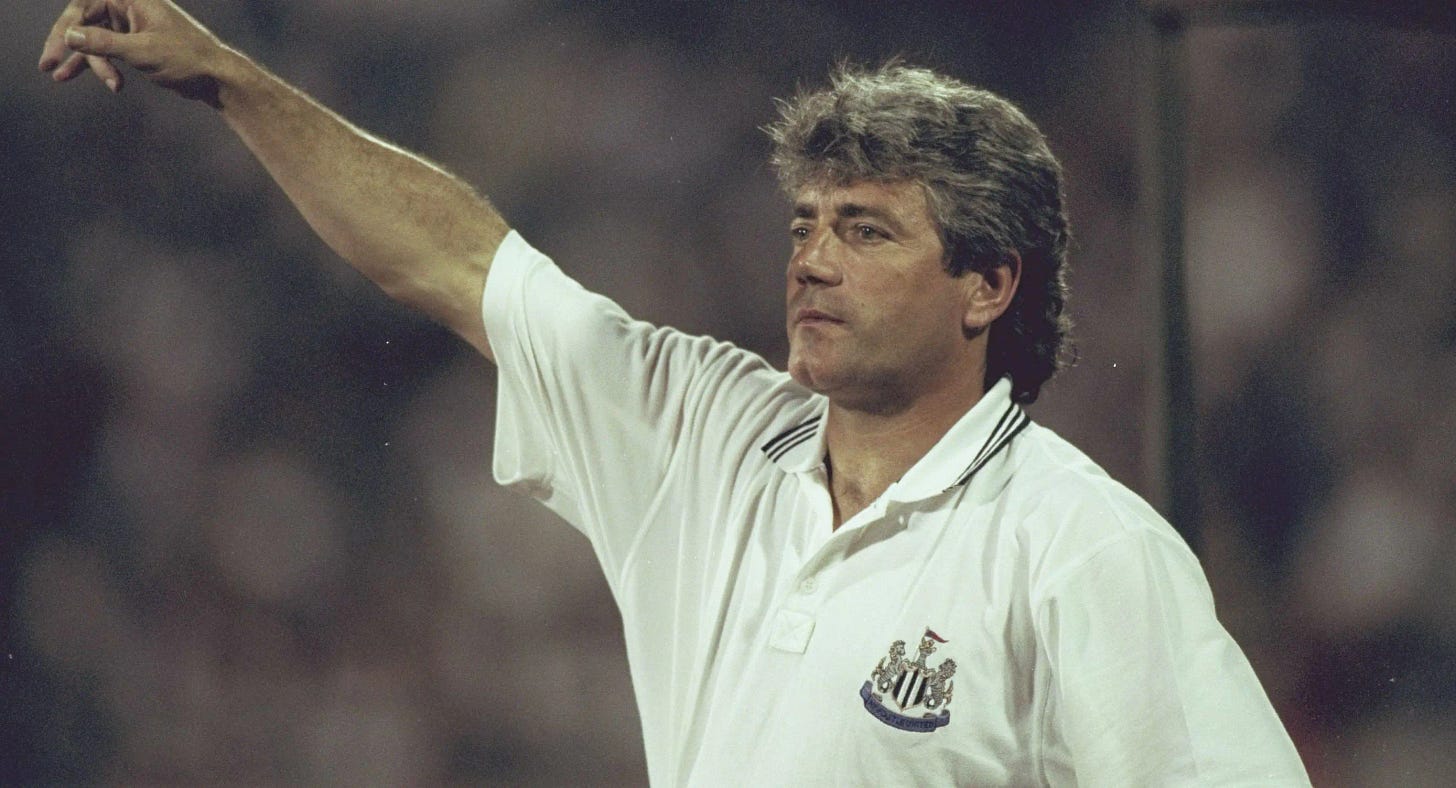Reclaiming Keegan: The Forgotten Great of Liverpool’s Golden Age
How Kevin Keegan became Liverpool’s first true superstar of the modern era
From Muddy Boots to Melwood: Keegan’s Unlikely Beginning
When you grow up being told that Kevin Keegan was once the best footballer on Earth, it’s difficult not to view him through a lens of myth. I remember hearing that claim repeated with certainty by people who had seen him play, who had felt the vibrations in the Kop when Keegan turned on the afterburners. Whether it was true in global terms is still open for debate, but there is little ambiguity for those who lived it in Liverpool red. He was electric, alive and utterly unforgettable.
His story begins in a place that rarely produces football icons. Scunthorpe United, defined as lower-league graft, had already offered one gift to Bill Shankly in Ray Clemence. It took boldness and a bit of stubbornness to return to the same well. Everton and Leeds reportedly passed on Keegan, dismissing him for his height or rough edges. Shankly didn’t. Shankly saw dynamite where others saw dust.
The young lad from Scunthorpe had been pencilled in as a midfielder. He was not destined for immediate stardom, and Liverpool hardly lacked personality then. But Keegan had magnetism. In a pre-season game at Melwood, he pitched as the first team versus the reserves and played for the second string. What followed was, in its quiet way, a revolution. Shankly saw not just energy but something more disruptive. That afternoon, he made a decision that would define a decade. He would play Keegan up front.
Dynamism Redefined on the Anfield Turf
It’s difficult to explain how different Kevin Keegan was from anything Liverpool had seen. He was small in stature, but he had an internal combustion engine where his chest should have been. He didn’t run, he erupted. He pressed before pressing had a name. He buzzed and harassed, harried and hunted. Shankly’s advice to Keegan before matches was to “drop hand grenades”, and in that single phrase lies the essence of how he was viewed, not as a forward in the traditional sense, but as a weapon.
This was a Liverpool team in transition. The second great side under Shankly was being forged. The old guard was giving way, and Keegan’s arrival in 1971 was perfectly timed. He scored on his debut against Nottingham Forest and, in truth, never really looked back. He didn’t just break into the team; he exploded into it.
Though never a clinical striker in the sense of a Fowler or Rush, Keegan’s influence was no less significant. He scored 100 goals for Liverpool in all competitions, but that number barely tells the story. His movement created chaos, his versatility allowed the team to adapt on the fly, and his intelligence opened spaces for the likes of McDermott to ghost into.
His partnership with John Toshack, often romanticised as the classic “little and large” pairing, deserves its status. Toshack was all muscle and frame, Keegan all angles and fire. They didn’t just complement one another; they elevated one another. At their peak between 1975 and 1977, their interplay was poetry in scuffed boots and muddy pitches. One nodded, the other darted. One shielded, the other sprang. Together they terrorised defences with a kind of joyful inevitability.
Liverpool’s Reluctant Icon
There is a strange bitterness to the way some supporters recall Keegan’s Liverpool exit. His choice to leave in 1977, just after delivering the European Cup in Rome, somehow disqualified him from the highest table in the club’s history. He was replaced by Kenny Dalglish, who didn’t just continue the story but rewrote it, and for many, that made it easier to forget that Keegan had been the first to turn the page.
But to erase Keegan is to misunderstand what he was. He wasn’t Liverpool’s property in the way Dalglish would become. He didn’t want to stay forever. He was always looking for the next mountain, the next noise. He wanted to test himself beyond Anfield, beyond England. As we know, Hamburg would become the next stage for his fire to burn.
And yet, for those six years at Liverpool, Keegan was more than just a footballer. He was the face of a club reinventing itself in the image of energy and optimism. Before him, Liverpool had heroes. After him, they had superstars.
Taking the Leap: Keegan’s Exit from Anfield
When Kevin Keegan announced in early 1977 that he would leave Liverpool at the end of the season, it caused a civic tremor. In an era when players rarely left successful English clubs for foreign leagues, the idea of Keegan departing Merseyside and England altogether was unthinkable. He wasn’t just a star at Anfield, he was the axis around which Liverpool’s modern identity had started to revolve.
He left after delivering the European Cup. His final match in a red shirt was a 3–1 win over Borussia Mönchengladbach in Rome. His legacy could have ended there. But Keegan, as he had always been, was restless. He wanted to prove himself in new conditions, under different skies, against a fresh backdrop. His destination: Hamburg.
For those of us brought up in English football culture, this move felt exotic, even bizarre. Hamburg were a decent Bundesliga side, but hardly world-beaters. Despite winning the World Cup in 1974, Germany was not the land of superstardom for English players. But Keegan didn’t go to Europe to coast. He went to conquer.
King Kevin of Hamburg
Keegan’s arrival at Hamburger SV was, initially, a culture shock for everyone. For the club, which was unused to the media attention he drew. For the fans, who found his style alien and his presence overwhelming. And for Keegan himself, who had to adapt to a more rigid, tactical game in a country where his name was barely known and his celebrity even less understood.
The first year was turbulent. There were clashes, miscommunications, even a public scuffle on the pitch. But what followed was the stuff of legend.
Keegan led Hamburg to the Bundesliga title in his second season, their first in nearly two decades. He was not just a contributor; he was the heartbeat. He was named European Footballer of the Year in both 1978 and 1979, achievements made more impressive because he was doing it far from the spotlight of English football and without the media engine that now propels modern stars.
He would lead Hamburg to a European Cup Final in 1980, which they lost to Nottingham Forest, of all clubs. That defeat didn’t diminish what Keegan had done. He had become a pioneer, the first English footballer to dominate abroad in an era before satellite coverage and internet fandom. He wasn't just surviving in Germany, he was setting the pace.
A Joyful Holiday at Southampton
When Keegan returned to England in 1980, he was expected to join one of the usual suspects, Manchester United perhaps, or even a return to Liverpool. Instead, he signed for Southampton, a club punching above their weight, and at the time, not seen as a realistic destination for a two-time Ballon d’Or winner.
And yet, the move made sense in a peculiar Keegan-esque way. It was a retreat from the glare, but not from the game. He flourished there. He made football look fun again. The pressure of European dominance gave way to something more playful, more expressive. Alongside players like Mick Channon and later Peter Shilton, Keegan gave Southampton a swagger they hadn’t known before.
In the 1981–82 season, albeit briefly, they genuinely challenged for the title. He scored goals, dazzled crowds and reminded English audiences just how good he still was. If Hamburg had turned him into a hardened competitor, Southampton showed he still had joy in his boots.
Newcastle: Keegan’s Emotional Return
For all the glory of Hamburg and the resurgence at Southampton, Keegan’s move to Newcastle United in 1982 was perhaps the most poetic. It wasn’t just a transfer but a homecoming of the spirit. Though not born in the city, Keegan had deep family roots in Newcastle. The move felt emotional, rooted in something beyond football logic.
Newcastle at the time were a second-tier club with big dreams and bigger crowds. In Keegan, they found the symbol they had long yearned for. He scored goals by the dozen and played with undiminished energy. But more importantly, he made Newcastle believe in themselves again.
He helped them win promotion to the First Division in 1984 and then called it a day in typically Keegan fashion. He walked away while still adored, leaving behind memories rather than questions. He was in his early 30s, still capable of contributing at the top level, but unwilling to play a diminished role. For Keegan, if he couldn’t give everything, he would give nothing. There was a purity to that.
Managerial Madness and Magic
If his playing career had chapters of surprise, his managerial one was a whole novel of twists. Keegan seemed an unlikely manager. He had retired from football completely, dabbled in media, and gave little indication he wanted to return. But in 1992, Newcastle called again. This time, they didn’t just need a talisman. They needed a saviour.
What followed was one of the most romantic football stories in English history. He didn’t just save Newcastle from relegation, he transformed them. They became the entertainers, a side full of flair, daring and attacking intent. With players like David Ginola, Peter Beardsley, and eventually Alan Shearer, Keegan’s Newcastle played football that crackled with excitement.
The 1995–96 season, when they pushed Manchester United for the Premier League title, remains iconic. It ended without silverware, but the image of Keegan slumped over an advertising hoarding, exhausted after a 4–3 defeat to Liverpool, remains one of the defining pictures of Premier League emotion.
He later managed Fulham, England, and Manchester City, with varying degrees of success. His tactical naivety was often pointed out, but nobody could ever accuse Keegan of lacking passion. He wore his heart outside his shirt, not just on the sleeve.
Legacy of Fire and Feeling
In football’s ever-mechanised world, Keegan remains a reminder of something more human. He was flawed, emotionally driven, impulsive and occasionally overwhelmed by the magnitude of the job. But he was also magnetic, honest and entirely himself.
His trophy cabinet may not gleam like that of Ferguson or Paisley, but few players or managers have ever lit up so many stadiums in so many different ways. Hamburg made him a legend, Newcastle made him a myth, and English football has never quite produced anyone like him since.
For all his pace, energy, and accolades, perhaps his authenticity endures. You believed in Kevin Keegan because Kevin Keegan believed in football, believed in its magic, momentum, and ability to make people feel.







Remember sitting in my bedroom, as a 13 year old, listening to the radio when Keegan was playing for the Reds.
Nice reminder of a true, yet understated legend. I was lucky enough to see his first game (as well his last) and he immediately surpassed the great Sir Roger in my eyes (also my first experience of the darker side of the game as this 13 year old had his scarf nicked by an adult Forest fan in Stanley Park. Hated them as a club from that day forward). What no one can deny was that Keegan was his own man and though I disowned him as a greedy bastard when he left I look back on his time at LFC as pivotal. We wouldn’t have won the European Cup in Rome without him and you have to win your first before you can win your second let alone your 6th. Thank you Eddie and thank you KK.